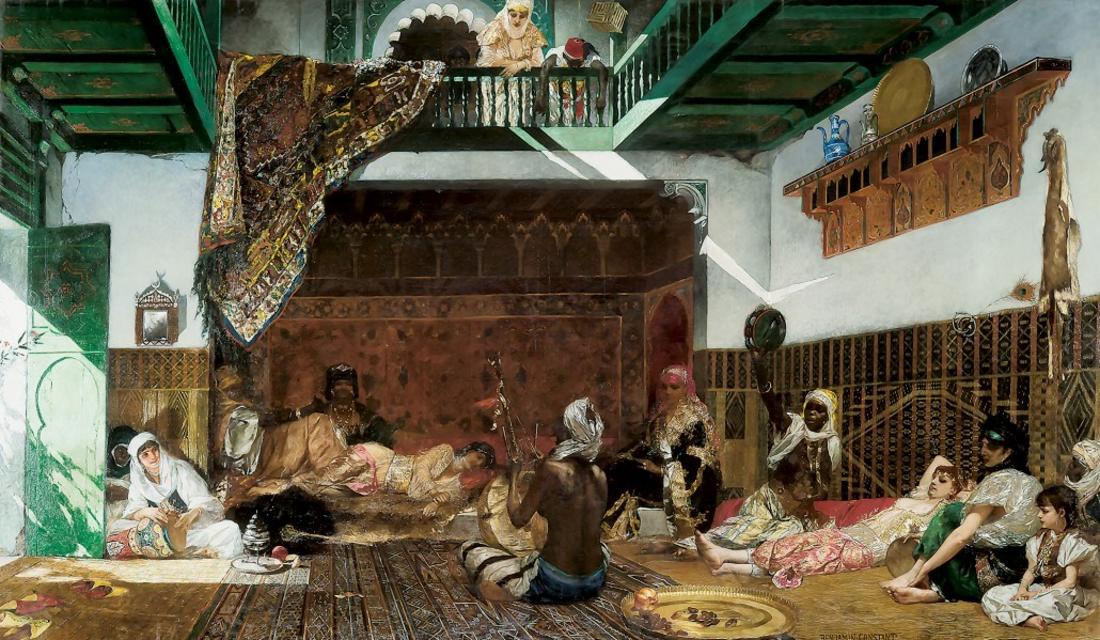This large painting is designed to arouse the curiosity of the viewer, placing them in the position of voyeur. Indeed, the choice of the harem theme allows the painter to renew a long tradition of classical, mythological nudes, by offering a realistic, intimate setting, which gives rise in the viewer to a pleasure close to that experienced when looking through a keyhole.
The space is enclosed, overlooked by a sun-drenched gallery upstairs. The bright light streaks across the walls, contrasting with the shadows protecting the intimate space. The Moorish-style carved furniture is likely what the painter brought back from his own trip to Morocco. Upstairs, a woman in a burka contemplates the scene. In the dim light, the bodies of black slaves gleam, playing music on traditional instruments. A hookah and oriental rugs complete the decor.
While the painter was praised for his art of composition and the modelling of his figures, his approach was criticised for focusing only on the picturesque, abandoning any attempt at reflection or analysis of an authentic, preserved society. The format of the canvas itself was condemned: indeed, at that time, only historical paintings enjoyed such dimensions. So it happened that, at the Salon of 1878, a visitor exclaimed "It is unwise to exaggerate to the proportions of a historical painting a subject that can only be interesting through the delicacies of its colour palette".
Yet the painter managed to win over his audience with this enticing Arab tale, which the State bought from him.

This large painting is designed to arouse the curiosity of the viewer, placing them in the position of voyeur. Indeed, the choice of the harem theme allows the painter to renew a long tradition of classical, mythological nudes, by offering a realistic, intimate setting, which gives rise in the viewer to a pleasure close to that experienced when looking through a keyhole.
The space is enclosed, overlooked by a sun-drenched gallery upstairs. The bright light streaks across the walls, contrasting with the shadows protecting the intimate space. The Moorish-style carved furniture is likely what the painter brought back from his own trip to Morocco. Upstairs, a woman in a burka contemplates the scene. In the dim light, the bodies of black slaves gleam, playing music on traditional instruments. A hookah and oriental rugs complete the decor.
While the painter was praised for his art of composition and the modelling of his figures, his approach was criticised for focusing only on the picturesque, abandoning any attempt at reflection or analysis of an authentic, preserved society. The format of the canvas itself was condemned: indeed, at that time, only historical paintings enjoyed such dimensions. So it happened that, at the Salon of 1878, a visitor exclaimed "It is unwise to exaggerate to the proportions of a historical painting a subject that can only be interesting through the delicacies of its colour palette".
Yet the painter managed to win over his audience with this enticing Arab tale, which the State bought from him.